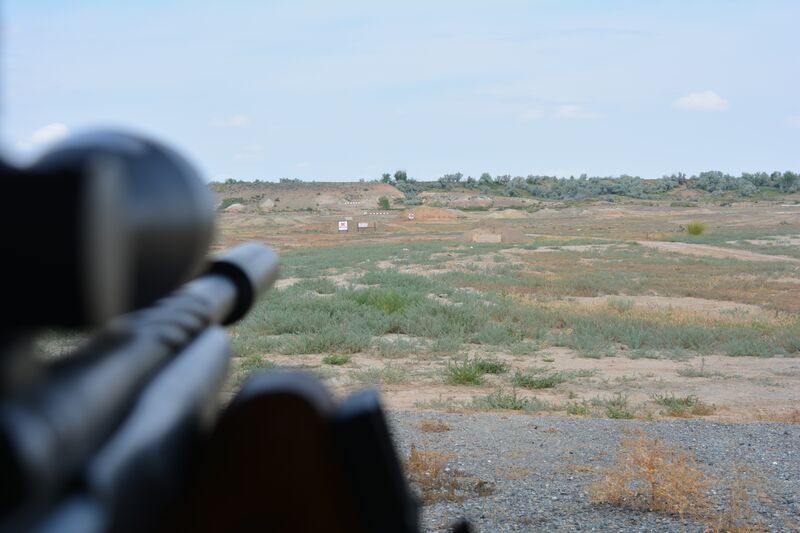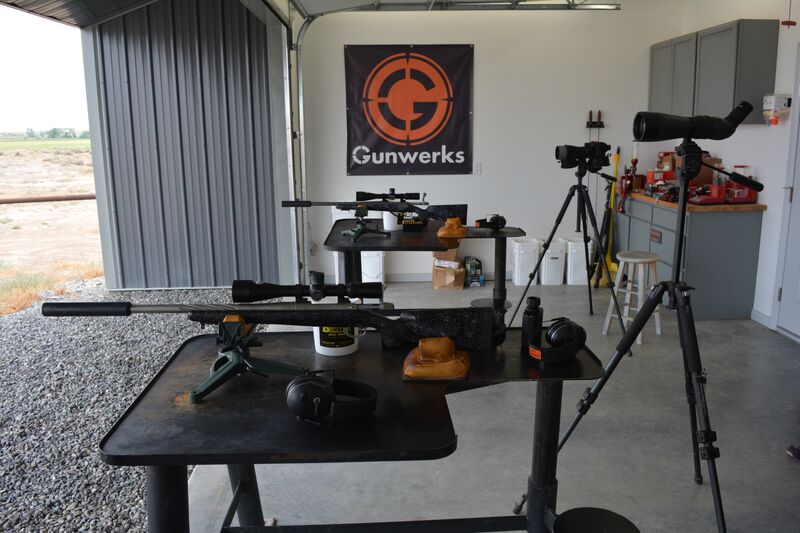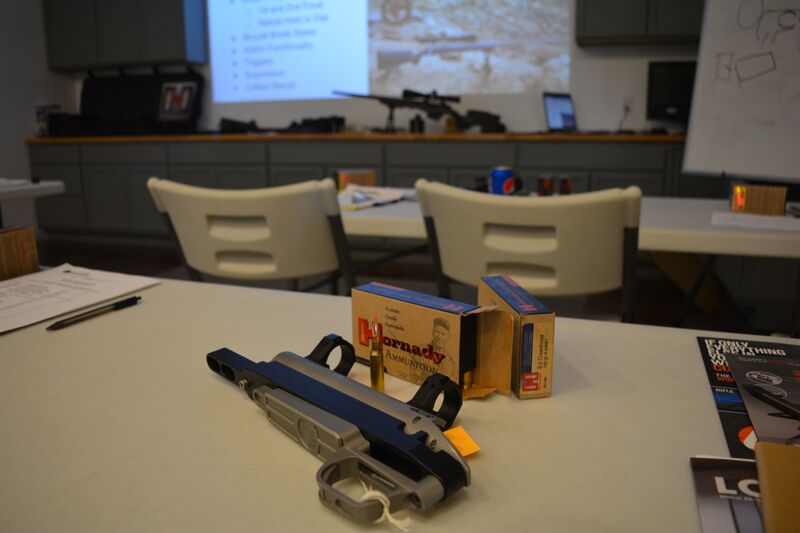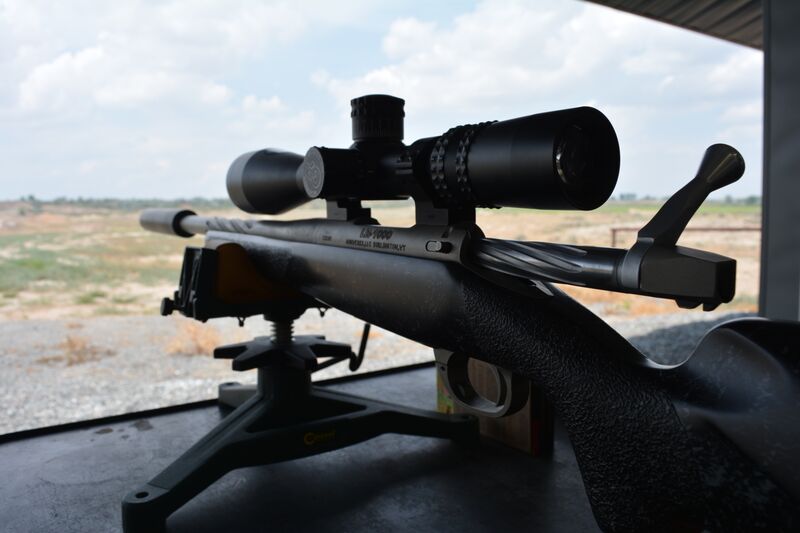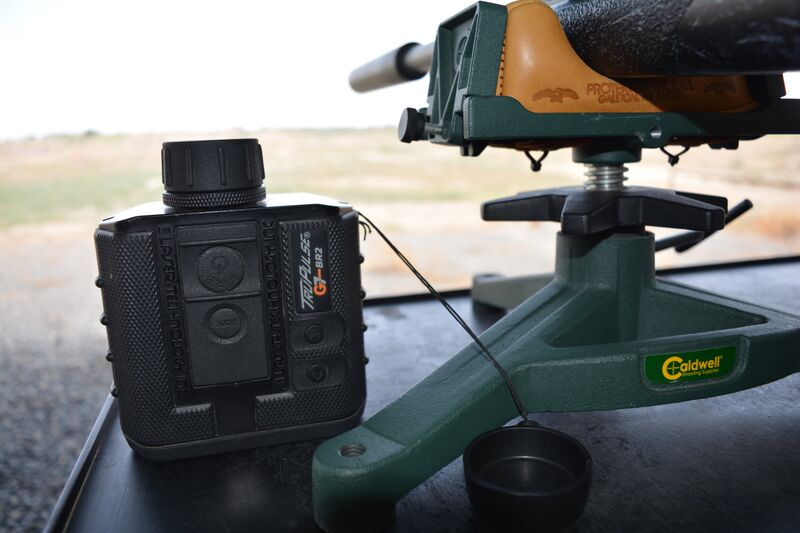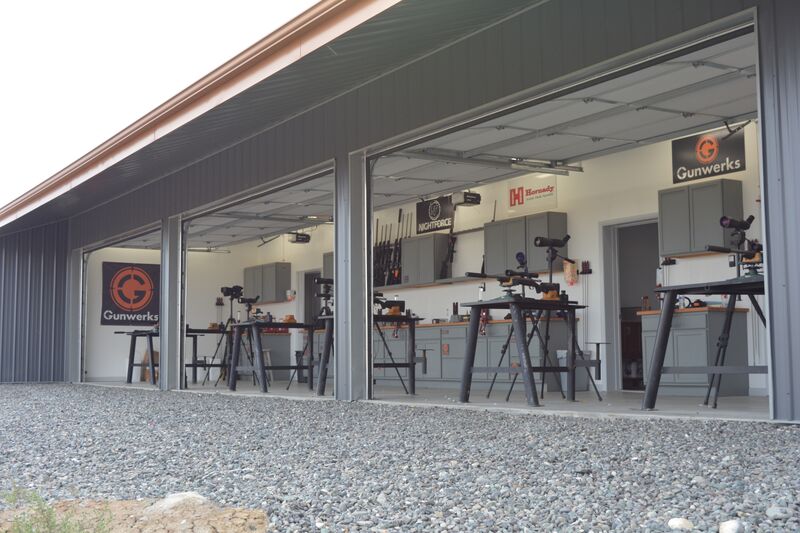In the past few years the hunting industry has seen a particularly divisive trend emerge from the fringes to gain mainstream status. From rifles to optics and accessories, the long range shooting and hunting phenomenon has spawned a host of new companies and products and sent the big conglomerates back to the drawing board in a race to meet the demand of what is now without question one of the hottest trends in the hunting industry.
However, there have been few topics in recent memory that have so intensely pitted hunter against hunter. In the past 12 – 18 months in particular numerous well known, highly respected writers and editors have gone so far as to issue position statements for their respective publications condemning the taking of wild game at “long ranges”. I use quotations there explicitly as herein lies one of the primary challenges of this whole discussion. We can’t really agree on a definitive definition of “long range”. Is it past 500 yards? For most hunters, anything past 300 yards is “far”. If you were to poll ten hunters sitting around a campfire you’d likely get ten different answers. Which begs the question, what are we really debating here? Is the definition of long range not highly relative to the skill of the operator, the accuracy and quality of the firearm, optics and the environmental conditions? And is the bigger question not what’s the most ethical approach to a clean, one shot kill? And what about archery equipment? Is a 60 yard shot not “long range” in relative terms?
I’ll be honest and admit that I was one of the naysayers for quite some time. I’ve never had to shoot an animal past 100 yards and proud of it. So it annoyed the hell out of me that in recent years when researching or shopping for a new scope I’d have to sift through model after model with (in my mind) useless and unsightly turrets and even more useless and distracting reticles that just cluttered up my sight picture. I scoffed at many of the newly popular “ultra” calibers, knowing full well 99% of hunters couldn’t shoot these calibers long enough and frequently enough to become proficient enough to make all that extra firepower worthwhile. I grew up with simple scopes and simple reticles, and spent my first few years hunting with open sights before I owned my first scope worthy rifle. So in my opinion, all this long range shit was just a new way for optics and firearms manufacturers to market and sell more guns and accessories to the ever-impressionable gun nut. It had no place in ethical hunting circles. Or so I thought.
But I was wrong. As is often the case, my opinion was not based on facts and experience but on the biases, perspectives and opinions I’d accumulated over the past twenty years. So when I finally decided to put some energy into researching this growing trend, I went looking for the thought leaders, the companies not simply spending their marketing dollars on kill-fest highlight reels of animals dropping at extreme ranges, but those that backed their entire enterprises up with facts, science and most importantly education. Enter Gunwerks.
I first heard about Gunwerks years before the launch of this e-magazine. Initially, my beliefs about long range hunting kept me from spending much if any time looking into their products or services but as time wore on it seemed as though I couldn’t read or research anything about ballistics without coming across some reference to Gunwerks. So it was with a decent dose of skepticism that I started to look into this upstart from Wyoming. I was impressed with what my research uncovered and the first hints of a change in my “long range tune” started to percolate as I went through some of their information. I’ve always been intrigued by long range shooting, but have always considered this to be, by and large, a separate “itch” from my hunting interests. I still found it hard to see the real world necessity of such equipment and most certainly could not afford any of their products, but I started to appreciate the fact that due to advancements in optics, bullet design, and ballistic science my long held notions of what constituted “too far” might have been a little closed minded. So from the outside, I continued to pay curious attention to this constantly evolving niche.
Fast forward to last year and the launch of the Journal. By this point, long range hunting was one of the hottest topics in the industry and Gunwerks had risen to the top of the LR field with multiple firearms and optics in their line-up, an incredibly well produced TV show and one of the most educational YouTube channels available to any hunter interested in long range ballistic science. I’d heard first hand from numerous people I trusted that their products were top-notch and I continued to be impressed with their emphasis on education. After a few phone calls with founder and CEO Aaron Davidson regarding sponsorship opportunities, we’d sealed a deal and both agreed that the first order of business should be for me to get down to Wyoming and personally experience their shooting systems and most importantly one of their courses as soon as possible.
And so, it was with immense excitement that I headed down to the Gunwerks HQ in Burlington, WY just over 2 weeks ago to go attend the Level 1 Course offered through their Long Range University. This would be my first time not merely shooting their equipment but also my first time shooting out past 300 yards. Needless to say, with a range set-up to accommodate 200 to 1000 yard targets I was going to see what both their products and my shooting skills were capable of.
Day one of the course started with a brief round of introductions, including our individual hunting and shooting backgrounds and then we dove into the material. The first day was going to be a mix of classroom and range time, and there was no question everyone was itching to get behind the guns. Our instructor James, a recently retired Army sniper, made it very clear from the outset that before we started the “fun” part of the course, it was essential we understood exactly what a true long range “system” equated to from a firearm, optics and rangefinding standpoint, and the internal and external ballistics and science that drives all ammunition decisions. The bulk of this material is beyond the scope of this article, and frankly why in my opinion the Level 1 course is worth every penny of the nearly $1000 fee. I can guarantee that the money spent on the course will save you thousands in misguided future expenditures. I considered myself relatively well versed in rifle construction, optics and ballistics and I learned more in that first half-day than I have in more than 20 years of hunting and shooting. And that is no exaggeration.
Far from being a Gunwerks sales presentation masked as educational content, the morning spent in the classroom was an eye-opening dissection of every piece of an accurate hunting and shooting platform. I use the term dissection intentionally as we literally stripped every piece of the rifle, scope, rangefinder, and bullet down to the smallest detail and were then showed scientifically why certain characteristics were literally essential to consistent accuracy at long ranges and why the lack of these characteristics in rifles, optics and ammunition marketed as being geared towards long range capabilities was a big red flag. Not only did the morning’s in-class session leave me with an unbelievably detailed understanding of the fundamental elements of a long range system, it made me an incredibly informed consumer and had me questioning more than a few of my planned purchases in rifles and optics. The morning was capped off with an overview of bench shooting and spotting techniques and the essential accessories required for accurate long range practice and ballistics validation. Again, the material here utterly tore down the walls of my previously held notions about sound shooting technique and the equipment characteristics that in turn allowed that to occur consistently.
After lunch we headed out to the range and separated into shooter/spotter teams. We would be shooting Gunwerks’ flagship model, the LR-1000, mainly in 6.5 Creedmoor with the odd 6.5-284 Norma mixed in. This would be my first time shooting one of the 6.5s and I was excited to see what this highly regarded cartridge could do. We immediately started applying some of the morning’s information and after quickly proving our zeroes at 200 yards we moved out to 400 and then 600 yards. Incredibly within a few rounds I was shooting solid groups at 600 yards. And let’s remember, I have never shot past 300 yards. Sure this was shooting from the bench but with a decent afternoon heat mirage and some cross-wind mixed in both the Gunwerks shooting systems and techniques were being proven up and down the firing line as the spotter’s to my left and right could be heard calling “Hit!” as the sound of punched steel rang out down range. When it came time to attempt 800 and then 1000 yards, the cross-wind and heat mirage really started to play into our accuracy but nonetheless, there were a lot of smiles and incredulous looks being exchanged as many of the shooters still managed to make consistent vital zone accurate hits within their first few shots at 1000 yards. After swapping out with my spotter, I assumed his role on the big Nightforce glass and as he did for me, helped to call out his hits and any necessary windage and elevation adjustments. The G7 scopes performed flawlessly and suffice to say there’s a reason Gunwerks works exclusively with Nightforce to produce the G7 scope line. By the end of day one, there wasn’t a man on the range that wasn’t sporting an ear to ear grin.
Our second day again commenced with some classroom time albeit a relatively brief session as day two is only scheduled as a half day and everyone was, of course, keen to get back on the guns. The emphasis of day two is external ballistics and the science and technology, such as the new BR2 rangefinder and G7 Ballistics Program, that allow us to validate our load’s performance on the range and therefore in the field. We also briefly covered wind doping, spindrift and the Coriolis effect, integral material to consider for accurate long range shooting. I should make it clear that these specific external ballistics variables are covered more extensively in Level 2 along with many other external ballistics considerations and not a key emphasis of the Level 1 curriculum. Level 1 is like wading into the shallow end of the “long range pool” and the waters are deep so it is essential to understand the fundamental elements of long range equipment and bench techniques before diving into field applications. Needless to say, I plan on attending the Level 2 course as soon as possible!
The G7 Ballistics Program was a particularly interesting component of day two and is something I’d like to highlight as I do not know of a more valuable ballistics tool for the hunter. The G7 software program can be used for any caliber in virtually any load to build a “dope sheet” or series of dope sheets that you can then print off and take with you in the field. I could spend an entire article on this tool alone, but do yourself a favour and check it out. You won’t be disappointed. And remember, like any software program, the data you put in drives the accuracy of the data that comes out so be sure you know what you need to know and if you do I promise you’ll reap the rewards.
Day two was a little overcast and since we were hitting the range well before noon the heat mirage was far less of a concern. I do not exaggerate when I say 2” groups at 600 yards were a gimme with just a few shots at 200 and 400 to “warm up” on the second day. I literally couldn’t believe that this level of accuracy was possible this easily with the right shooting platform and knowledge. The conditions certainly helped but again, the equipment proved its capabilities and all misses were the responsibility of the shooter not the system. By this point I definitely started to question my previous definition of “long range” and although I have no plans to take shots at these distances with my current equipment, it was amazing to personally see that it was consistently possible with the right equipment and the right conditions. Again up and down the line, attempts at 800 and 1000 yards produced accurate vital zone shots and some of the course attendees were getting scarily accurate for having only spent a few hours in totality behind their rifles.
As spotters on day two, we used the BR2 rangefinder to select our MOA adjustments at the various ranges and this new tool from Gunwerks is one hell of a piece of equipment. There is a ton of functionality packed into an incredibly compact and lightweight little package. If you’re a long range shooter or considering getting into it the BR2 is an invaluable tool that should be on your wish list. As the day wrapped up, I was truly surprised by how much I’d learned. I drove back to my hotel with all the invaluable information and experience from the past day and a half swirling around in my head. Between the classroom material and the range time I didn’t feel as though even one second of the course was wasted. I’d been informed, educated and gained invaluable experience.
Frankly, I’d had one hell of a good time.
So will I be joining the ranks of the long range proponents now? The short answer is, it depends. Before experiencing the course for myself, I maintained the opinion that the ability to accurately and consistently shoot and kill past 500 yards was only possible for a select, highly trained and experienced few with highly specialized equipment that wasn’t really practical in a typical hunting, let alone mountain hunting, scenario. And on this point specifically, I’ve now been educated and have personally experienced a firearm and optics system that is without question field ready and applicable.
Further, out of the 13 people that attended the course, every single attendee was making vital zone hits on a consistent basis at distances that I’d previously considered “too far to shoot”, namely 600 to 1000 yards. Yes, this was from near perfect bench positions but the point remains that this was happening consistently enough in a group of men with different shooting backgrounds and body types and sizes that the only consistent variable, the Gunwerks shooting platforms and bench shooting techniques, have to be acknowledged as the key driver of this consistent accuracy. And as I wrote earlier, what is the primary question we’re really asking ourselves in this whole long range debate? What’s the ethically acceptable distance at which an individual can consistently make a clean kill shot right? I can honestly say that with the Level 1 course under my belt I have a new found appreciation for what’s not just possible, but repeatable with scary accuracy and consistency with the appropriate education and equipment. In a recent discussion with a prominent media personality on this exact topic, he made the point that if you’re “shooting at” an animal as opposed to legitimately calling your shot and knowing with a high degree of confidence that your chances of making the shot are rock solid then it’s too far. The old phrase, if there is a doubt, there is no doubt applies well here.
Will I be going afield this fall with plans to “shoot at” animals beyond my previously imposed limits? Hell no. But do I feel that with my current equipment I’m a far better shot and have a far better understanding of both internal and external ballistics after the Level 1 course? You can be damned sure of that. In my opinion, every hunter should experience a course of this depth and quality. And there’s no question that if I had a Gunwerks rifle system in my hands and both the Level 1 and Level 2 courses under my belt, I’d feel confident enough to call shots at distances I would never have considered possible for the average hunter.
But until then, I’m just going to have to keep getting close.


